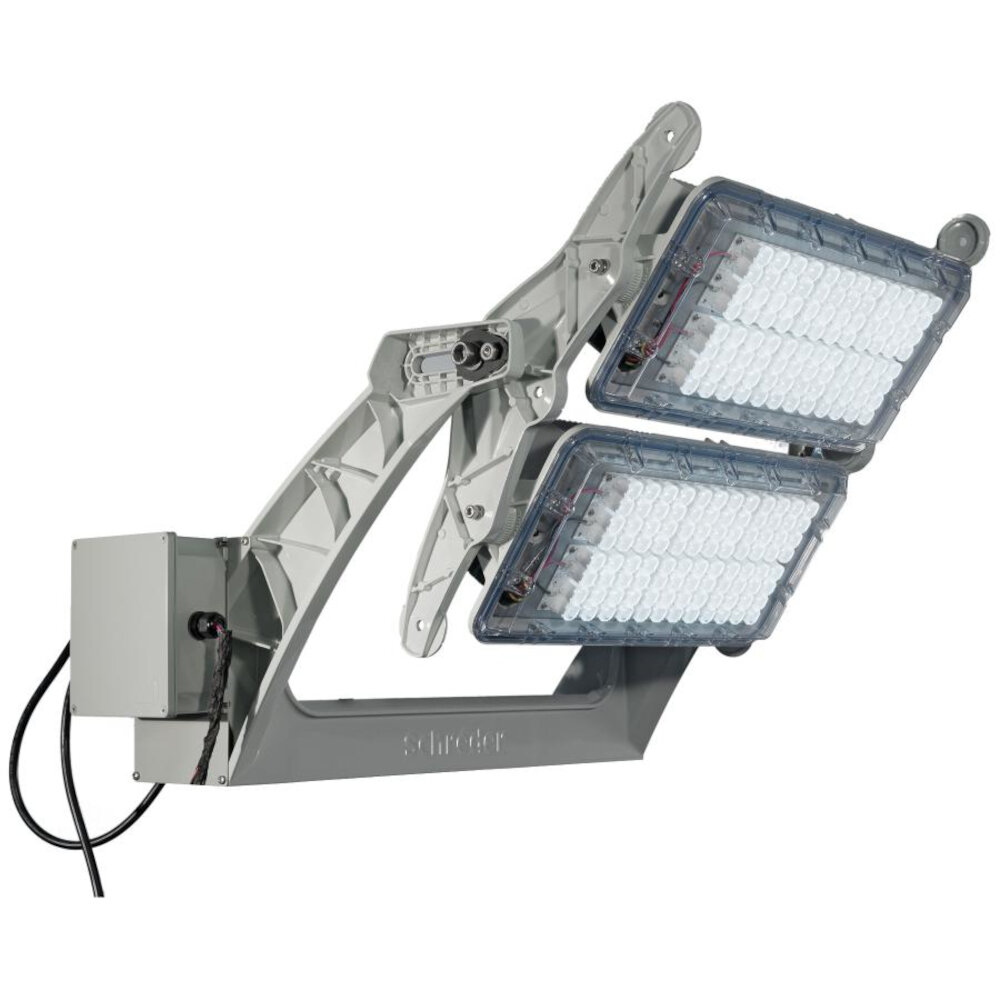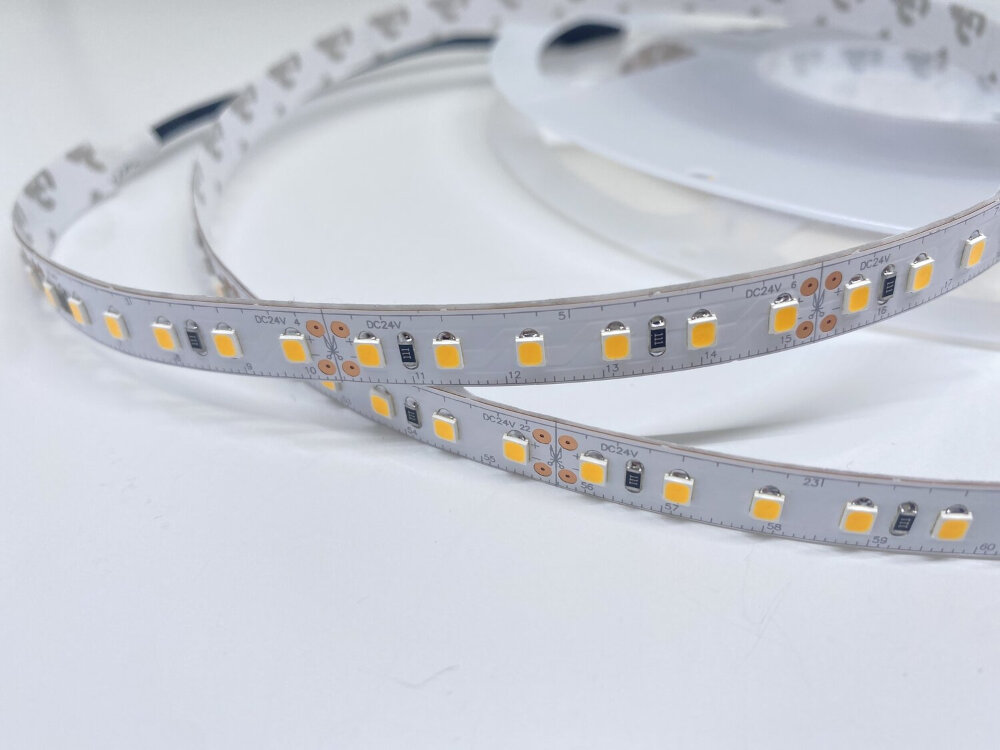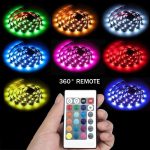Car Lighting Made Easy: A StepbyStep Guide on Installing LED Light Strips

Car lighting is an essential aspect of any vehicle, as it provides drivers with the necessary visibility required to navigate through the dark. Over the years, advancements in car lighting technology have allowed for the development of LED light strips, which not only provide better illumination but also enhance the aesthetic appeal of the car. Installing LED light strips on your car can seem like a daunting task, especially if you have no prior experience with electrical wiring. However, with the right tools, materials, and step-by-step instructions, anyone can easily install LED light strips on their car and transform its appearance. In this guide, we will provide you with a comprehensive step-by-step guide on how to install LED light strips on your car. We will cover everything from selecting the appropriate LED light strips for your car to the tools and materials required for the installation process. We will also provide you with detailed instructions on how to install the LED light strips safely and effectively, ensuring that you achieve the desired results. Whether you are a car enthusiast looking to upgrade your vehicle’s lighting or a novice who wants to add some personality to their car, this guide is for you. So, let’s get started and make car lighting easy!
LED light strips have become increasingly popular in recent years due to their flexibility, durability, and energy efficiency. They consist of a long, narrow circuit board with embedded LED lights that emit bright, vibrant colors. LED light strips are available in a range of lengths, colors, and brightness levels, making them suitable for a wide variety of applications. They are commonly used to enhance the aesthetics of cars, boats, and motorcycles, as well as for interior and exterior home lighting. LED light strips are easy to install and can be cut to fit any length, making them a versatile and cost-effective lighting solution. With their low power consumption and long lifespan, LED light strips are an excellent choice for anyone looking to brighten up their surroundings in a stylish and energy-efficient way.
Installing LED light strips in cars can offer numerous benefits, such as enhancing the overall aesthetic appeal of the vehicle. These strips are easy to install and can be placed in various locations, including under the dashboard, seats, and in the trunk. LED light strips are also energy-efficient and durable, which means they can last for years without needing to be replaced. Additionally, LED lights offer brighter and clearer illumination, making it easier for drivers to see the road ahead. LED light strips come in various colors and can be controlled remotely, allowing car owners to customize their car’s lighting to their liking. Overall, installing LED light strips in cars is a cost-effective and simple way to improve the look and functionality of any vehicle.
Things to Consider Before Installing LED Light Strips

Before installing LED light strips in your car, there are a few things you should consider. Firstly, you should determine the type and color of the LED light strips you want to install. There are various types of LED light strips available in the market, such as single-color, multicolor, or RGB. Single-color LED light strips are available in different colors such as white, blue, red, green, and yellow. Multicolor LED light strips are available in a range of colors and can be controlled using a remote or an app. RGB LED light strips allow you to choose from a wide range of colors and can be customized according to your preference. It is important to choose the right color and type of LED light strips that suit your car’s interior and exterior. Secondly, you need to consider the length of the LED light strips. Measure the area where you want to install the LED light strips and choose the appropriate length of the strips. It is better to choose a longer strip than a shorter one, as you can always cut the excess length. However, if you choose a shorter strip, you may not be able to cover the entire area. Additionally, you should also consider the adhesive quality of the LED light strips. Ensure that the adhesive is strong enough to hold the strips in place and does not leave any residue or damage to your car’s interior or exterior. By considering these factors, you can successfully install LED light strips in your car and enhance its aesthetics.
When it comes to installing LED light strips on your car, it’s crucial to be aware of the legal requirements and regulations that apply to your specific location. These regulations vary by country, state, and even municipality, so it’s essential to research the laws in your area before making any modifications to your vehicle. Some regulations to consider may include the brightness and color of the lights, as well as their placement on the car. Failing to comply with these regulations can result in hefty fines or even legal consequences, so it’s important to take the time to understand and adhere to them.
When installing LED light strips in your car, it is crucial to take safety precautions. Firstly, ensure that the car is turned off and the keys are removed from the ignition before starting the installation process. This will prevent any electrical accidents from occurring. Secondly, wear protective gloves and eyewear to protect yourself from any sharp edges or debris that may be produced during the installation. Additionally, avoid working in wet or damp conditions and make sure that the area you are working in is well-ventilated to prevent any toxic fumes from being inhaled. Lastly, always follow the manufacturer’s instructions carefully and do not attempt to modify or alter the LED light strips in any way as this can create a hazard. By taking these safety precautions, you can ensure a smooth and safe installation process for your LED light strips.
LED light strips are a versatile and popular lighting solution that can be used for a variety of purposes, including car lighting. There are several types of LED light strips available, including single-color, multi-color, and RGB strips. Single-color strips emit a single color of light, such as white, red, blue, or green, and are often used for accent lighting or task lighting. Multi-color strips can emit a range of colors and are ideal for creating dynamic lighting effects or mood lighting. RGB strips are the most versatile and allow for full-color customization, as they combine red, green, and blue LEDs to create any color in the spectrum. When choosing an LED light strip for your car, it’s important to consider the intended use and desired effect to select the type that best suits your needs.
Tools and Materials You Need

Installing LED light strips in your car can be a fun and rewarding DIY project, but it’s important to have the right tools and materials on hand to ensure a successful installation. Firstly, you’ll need a high-quality LED light strip kit, which typically includes the LED strips themselves, a power supply, and any necessary connectors or accessories. Look for kits with waterproof strips and a reliable power supply to ensure that your lights will last for a long time and withstand any weather conditions. It’s also important to consider the length and width of the strips when choosing a kit – make sure they’re the right size for your car’s interior or exterior. In addition to the LED light strip kit, you’ll need a few basic tools to complete the installation. These might include wire cutters, pliers, a screwdriver, and electrical tape. It’s also a good idea to have a voltage tester on hand to ensure that your power supply is working properly and to avoid any potential electrical hazards. Depending on where you plan to install the LED light strips, you may need additional materials like mounting brackets, adhesive strips, or zip ties. Be sure to read the installation instructions carefully before you begin, and don’t be afraid to ask for help if you’re not sure about something. With the right tools and materials, you’ll be able to install LED light strips in your car quickly and easily – and enjoy a stylish and eye-catching new look!
Before starting the installation process of LED light strips in your car, it is important to gather all the necessary tools and materials. The list includes LED light strips, power source, wire connectors, wire cutters, wire strippers, electrical tape, a screwdriver set, and a voltage tester. Additionally, it is important to have a clean and well-lit workspace, gloves, and safety glasses to protect yourself from any potential hazards. Having all the required tools and materials beforehand will make the installation process smoother and efficient.
Choosing the right tools and materials is crucial when it comes to any DIY project, especially one as intricate as installing LED light strips in your car. Firstly, make a list of all the tools and materials you need to ensure you have everything before starting the project. Then, consider the quality of the tools and materials you purchase, as investing in high-quality equipment will not only make the job easier but also ensure a better end result. Additionally, choose tools that are the right size and shape for the job, and make sure materials are compatible with each other. Lastly, don’t forget to consider safety when choosing tools and materials, as some may pose a risk if not used correctly. By following these tips, you can ensure a successful and safe installation of LED light strips in your car.
Installation Process

The installation process can seem intimidating at first glance, but with the right tools and approach, it can be a straightforward and rewarding experience. Before getting started, it’s important to have all the necessary equipment on hand. This includes LED light strips, a power supply, a remote control, electrical tape, wire connectors, and a pair of wire cutters/strippers. It’s also a good idea to have a plan in place for where you want the lights to go and how you want them to connect to power. Once you have everything ready, the first step is to measure and cut your LED light strips to the appropriate length. This can be done using a pair of scissors, but it’s important to cut along the designated cut points to ensure proper functionality. Next, connect the power supply to the LED light strips using wire connectors and electrical tape. It’s important to make sure the polarity is correct, as reversing the positive and negative connections can damage the lights. Finally, connect the power supply to a power source and test the lights to ensure they’re working properly. With a bit of patience and attention to detail, the installation process can be a fun and rewarding DIY project for car enthusiasts of all skill levels.
Installing LED light strips in a car is an easy and affordable way to enhance its appearance and add a touch of personality. First, gather all the necessary tools, including the LED light strips, a power supply, wire cutters, and electrical tape. Next, measure the length of the area where you want to install the lights and cut the LED strips to fit. Then, connect the power supply to the strips and test the lights to make sure they are functioning properly. Finally, use electrical tape to secure the strips in place and hide any visible wires. With these simple steps, you can transform your car’s interior or exterior with vibrant and eye-catching LED lighting.
Proper positioning and securing of light strips is crucial to achieving the desired effect and ensuring safety while driving. Before installation, it’s essential to determine the areas where the light strips will be placed and test the adhesive strength of the tape to ensure it can hold the weight of the strips. When positioning the light strips, ensure they are placed in a way that they do not interfere with the driver’s visibility or cause any distraction. Properly securing the light strips will also prevent them from falling off or damaging the car’s interior. To achieve this, use cable ties or adhesive clips to hold them in place. Additionally, ensure the wiring is concealed to prevent any possible electrical hazards. Following these simple tips will help you achieve a seamless installation and enhance the overall look of your car.
Troubleshooting Common Problems

Car lighting is one of the most important aspects of your vehicle, and LED light strips are a popular choice for many car enthusiasts. However, as with any installation, there may be some common problems that arise. The first thing to check is the power source. Ensure that the LED light strips are receiving power by checking the wiring and connections. If the wiring is loose, the strips may not light up or may flicker. If the wiring is intact, check the fuse to make sure it is not blown. A blown fuse can cause a lack of power to the LED light strips. If the power source is not the issue, then the problem may lie in the wiring. Another common problem that can occur during the installation of LED light strips is incorrect wiring. Make sure that the wiring is connected according to the instructions provided with the kit. The wiring should be connected to the power source and switch correctly to ensure that the LED light strips turn on and off properly. If the wiring is incorrect, the lights may not turn on or may turn on but not turn off. In some cases, the LED light strips may even short circuit, causing damage to the strips or other components of the car. By troubleshooting these common problems, you can ensure that your LED light strip installation goes smoothly and that your car looks great with its new lighting.
Installing LED light strips is an exciting project that can enhance your car’s look and functionality. However, common issues may arise during installation that can be frustrating and time-consuming. One of the most common issues is incorrect wiring, which can cause the lights to not turn on or flicker. Another issue is poor adhesion, where the light strips may fall off or not stick properly. In addition, improper placement of the lights can also be a problem, leading to uneven lighting or shadows. It is essential to carefully follow the instructions and take the time to troubleshoot any issues that arise to ensure a successful and safe installation.
In order to fix common car lighting problems, there are several solutions that can be implemented. For example, if the headlights are too dim or not functioning properly, it may be necessary to replace the bulbs or clean the lens. Additionally, if the turn signals are not working properly, it may be necessary to replace the relay or fuse. Installing LED light strips is another solution that can improve the overall visibility and aesthetics of the car. This can be done by following a step-by-step guide, which includes selecting the appropriate LED light strips, preparing the surface, and connecting the strips to the car’s electrical system. By implementing these solutions, car owners can ensure that their vehicles are safe, functional, and visually appealing.
In summary, installing LED light strips in your car can be a great way to upgrade its lighting system and add a personalized touch to its interior. The process can be broken down into several steps, including gathering the necessary tools and materials, planning the placement and wiring of the strips, and connecting them to a power source. It is important to ensure that the installation is done safely and securely, and to test the lights thoroughly before hitting the road. With some patience and attention to detail, anyone can successfully install LED light strips in their car and enjoy the benefits of improved visibility and style.
In conclusion, installing LED light strips in cars is a great way to enhance the overall aesthetics of your vehicle while also providing practical benefits. LED lights are energy-efficient, durable, and versatile, allowing you to customize your car’s lighting to fit your personal style. The installation process is relatively simple and can be done with just a few tools, making it a great DIY project for car enthusiasts. Additionally, the various color options and lighting effects available with LED light strips make it easy to create a unique and eye-catching look for your car. Overall, the benefits of installing LED light strips in cars make it a worthwhile investment for any car owner looking to upgrade their vehicle’s lighting.
Conclusion

In conclusion, installing LED light strips in your car is a relatively easy process that can greatly enhance the look and functionality of your vehicle. With the step-by-step guide provided, anyone can achieve a professional-looking installation with minimal effort. LED light strips offer a range of benefits, including improved visibility and a more modern appearance. Whether you’re looking to upgrade your headlights, interior lighting, or undercarriage illumination, LED light strips provide an affordable and versatile solution. So, don’t hesitate to try installing LED light strips in your car and experience the difference for yourself.




